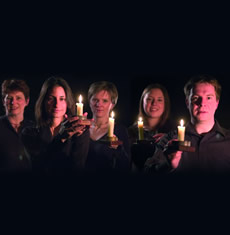

 |
 |
|
Saint Saens, Poulenc, Massenet &  Duruflé Duruflé
Poulenc – Litanies a la Vierge Noire; Figure Humaine Massenet – Pie Jesu Duruflé – Requiem
Ex Cathedra / cond Jeffrey Skidmore Andrew Skidmore - cello Alexander Mason - organ Frances Bourne – mezzo-soprano Eamonn Duggan - baritone
St John's , Smith Square 3 February 2007
Ex Cathedra is a choir renowned for performing unfamiliar choral masterpieces and their visit to St John's featured an adventurous pairing of two twentieth century French composers – Poulenc and Duruflé.
Poulenc wrote Litanies a la Vierge Noire at a time of personal crisis and shortly after a pilgrimage to the cliff top shrine at Rocamadour. The text refers to St Amadour, who is credited with building of the refuge, literally hacked out of the steep rock face, and invokes the help of the Black Virgin. Here the choir's mixture of female voices with the addition of male altos made an effective combination.
The second Poulenc item Figure Humaine sets words by Eluard in praise of liberty and was composed in 1943 during the German occupation of France . At this dark time, merely writing the word “Liberté” was both an act of defiance and an act of hope in the future. The finale repeats the theme J'ecris ton nom and ends with the declaration “through the power of a word I restart my life”. The impact of the poem was increased considerably by each verse being read aloud before being sung; the bitter sweet sound of the French text creating a unique atmosphere. Perhaps the one thing missing was deeper male voices to express the anger inherent in this work – the contrasts available did not seem to match the violent emotions being expressed.
The last item, the Requiem of Duruflé, was also about liberty, but this time it was freedom from mortality, as enshrined in the Libera me movement. Duruflé places everything within the timeless framework of the ancient plainchant tradition, befitting a student of Vierne and Tournemire, and a spirit of tranquil resignation pervades. The familiar fear of judgement expressed in Dies irae, dies illa momentarily shatters the calm but the work ends with the ethereal beauty of In Paradisum visualising the Christian soul entering heaven.
The discreet organ and cello accompaniment were admirable throughout and the soloists were likewise excellent
S Jenkins
|